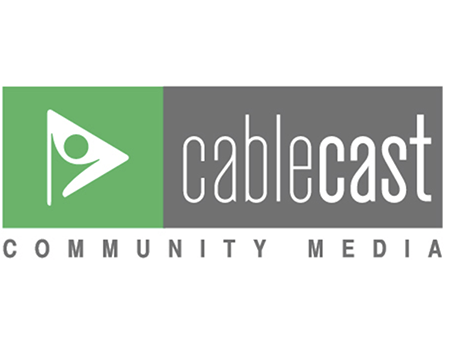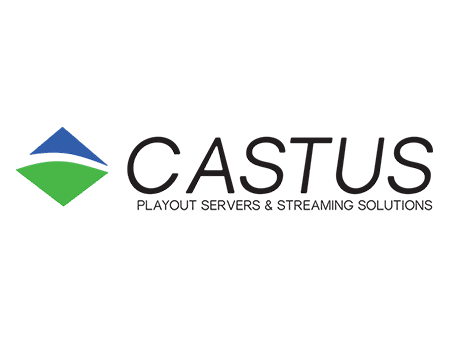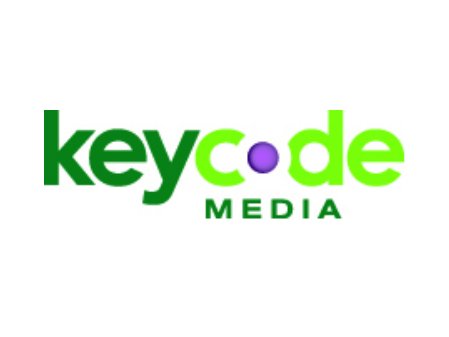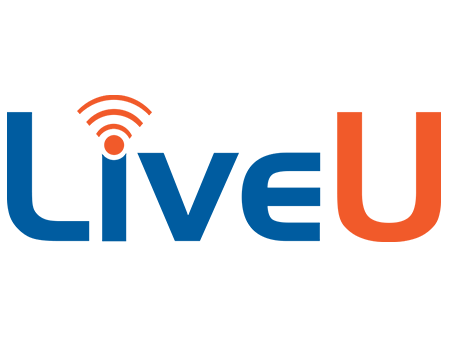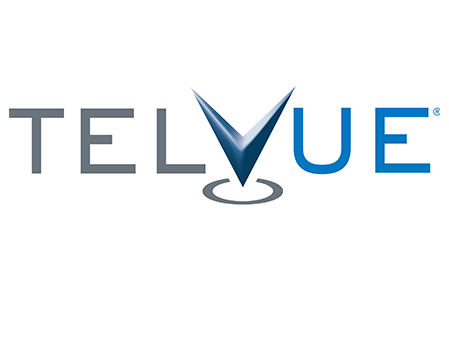The City of Milwaukee is Wisconsin’s largest city by far. Its population of 570,000 easily outstrips Madison, the next largest city in the state at 270,000. One might imagine that the video service team tasked with covering a big city government would reflect its size. But you’d be wrong. Milwaukee City Channel has a dedicated, creative, and hard-working staff of four. Paul Karczewski, City Channel Manager, who is tasked with being the buffer between requests and work assignments says, “We try to satisfy everyone’s needs, but we can’t always do that.” But quickly, as if to voice the can-do attitude of City Channel staff, Tom Loppnow, Television Production Specialist, adds, “But we always do our best to find a way.”
The mission of City Channel is to cover government meetings, promote and cover city events, and serve the needs of city departments and the fifteen alders and mayor who govern the city.
Meeting coverage
The standard workload for City Channel 25 includes covering 23 committees, commissions, councils, and boards that range from the Common Council to the Fire and Police Commission, to the Board of Zoning Appeals. “We promise pure raw information as far as meetings go,” said Loppnow. “What you see is what you get. People think media has bias. We don’t editorialize. It’s 100% unedited. What happens inside the room is what you see. I think this is the biggest service we provide to anybody.” Karczewski continued, “We give the community a way to see how government works whether or not they can come down to the building. They can see how the budget process works. They can find out about an issue. The public can come here and speak.” Loppnow added, “Sometimes a friend will comment on something that’s happening at the city. They’ll have seen a misleading headline and I just tell them, ‘Go watch it. Watch the meeting. That’s not what happened.’ I think carrying meetings from beginning to end with no editing is the biggest and most important thing we do here.”
Technical advancements have made coverage more efficient. In the early days, cameras were manned, equipment had to be moved around to meeting rooms, and it took more time and a much larger production crew. During that period, City Channel operated with a staff of seven and covered twelve committees. Today, fiber optic connections link meeting rooms, which are equipped with robotic cameras and microphone systems, to a director’s control room that is configured to send out a live signal to both a livestream channel and cable TV.
Everything was working just fine until the pandemic threw City Channel a curve ball: how would they cover meetings with both in-person and online participation at the same time? City Clerk Jim Owczarski knew it would be extremely important to maintain government transparency. Karczewski said, “The City Clerk came to us and said, ‘you need to figure this out to keep city business going.’ We had a limited time to get things rolling and remain transparent. We worked really hard to keep things running on time without skipping a beat and staying on air. It took a lot of planning and trial and error, but we did it and I’m really proud of how we met that challenge.” Manifesting that can-do attitude, in a matter of days the team figured out how to integrate online meeting platforms. Rooms were redesigned, audio systems were improved, systems were upgraded, and officials were trained. Go To Meeting was chosen as the main platform, but to this day, City Channel will help committees that want to use Zoom or Teams. “Some software platforms do better at some things than others. For example, Zoom offers bilingual features. So, we’re knowledgeable about all of them,” said Karczewski.
City Channel is finding that more and more people are starting to come back to City Hall for meetings. “It’s easier to participate here in the room,” said Karczewski. “And sometimes there can be a glitch now and again with hybrid coverage. But we will never go back to the way it was before.”
Before the pandemic, committees needed to assemble a quorum in the building in order to conduct business. On one occasion a committee had to bring people in at 10 pm to address an important motion. That is no longer the case. But the ease with which committees can now call a meeting means that City Channel has to be ready at the drop of a hat to make it work. “Special meetings can pop up at any time. Sometimes it means using a room not normally used for meetings and making it work as a hybrid location. We just find ways to adapt, make it work, and then make it even better,” said Loppnow.
Staff background
City Channel Manager Paul Karczewski
Karczewski has been working in the television field since the early 1990’s. When he applied to the City of Milwaukee 20 years ago, he had been traveling a lot for his job and was tired of it. He was interested in politics and he liked the idea of giving back to the community – and of course working in video production. Tom Loppnow began as a part-time employee in 2008. “At that time, I had my own video production business,” said Loppnow, “but the hours were long. I had gotten tired of that, and I wanted something more stable with weekends off.” When a fellow staffer became ill, his hours were increased and when a full-time position became available, he got the job. Tom was ready to take the leap. “A standard 8 – 5 day was really attractive to me. Of course, that’s not the case anymore! We often work evenings and sometimes weekends.”
Serving city officials
City Channel thinks of the mayor and all fifteen alders as their bosses and tries to please all of them, keeping in mind the mission of the station that enables Karczewski to put boundaries on what they will do. “We are a city service, covering city services and city-sponsored events,” he said. Sometimes alders will sponsor an event that is not strictly a city event. It might be a neighborhood event or a town hall meeting. If they ask for help, City Channel will promote the event with a short PSA or do a promo graphic to run between shows on the channel or help them get a livestream set up on their personal Facebook page, but they won’t cover the event.
Girls Day at Milwaukee City Hall
City-sponsored events reflect the diversity of its residents whose roots can be traced to all over the world – Europe, the Caribbean, Mexico, Central America, Africa and Southeast Asia. On March 31, the city sponsored the annual Cesar Chavez Day, which celebrates the life of this Mexican-American man born in Arizona who fought for the rights of migrant workers. On March 23, City Channel covered the 13th annual Girls’ Day, which takes place at City Hall and inspires girls to consider careers. For the event, City Channel produced short features on notable Milwaukee women that were played that day and later carried on the city’s channels. In August, City Channel will cover Hip Hop Week.
Serving city departments
Milwaukee City Channel also serves the needs of city departments. Sometimes it might just be taking a press release and turning it into a graphical notice for play during breaks between programs on the City’s cable and livestream channels. Sometimes a short video is the best way to get the information across. Staff has produced features on winter parking, recycling, and even how salt brine is made. “We try to leave 15 minutes between programs so we can get in these bits of information that we want to share with residents,” said Karczewski. City Channel imports very little programming from outside sources. “It has to be related to the city,” said Karczewski. “We really take a fine-tooth comb to any show that comes to us. It has to have high production values, too.”
How audiences watch
Most Milwaukee City Channel viewers watch its programming and meeting coverage on-demand. People can pick the best time to view what they want to watch, and they can see it in full high-definition (HD). Using the Granicus system, viewers can go directly to a meeting agenda item they are interested in watching. Milwaukee City Channel offers Live Stream I and Live Stream II. Live Stream I is the same feed as Charter Spectrum channel 25 and AT&T Channel 99. It carries Common Council meetings, major committee meetings, and some event coverage. Live Stream II carries more committee meetings and public court trials. The livestreamed channels and archived meetings are online at https://city.milwaukee.gov/cityclerk/CityChannel.
Still, a large portion of its audience prefers to watch local government coverage on cable TV. “Some people are just not well-versed in how to get to our livestream or use the Granicus system,” said Loppnow. “And a lot of constituents don’t have the internet. One woman calls us at least every other week, asking how to access certain meetings. She just can’t get it. She is otherwise very intuitive and very active, but she just doesn’t understand computers.”
State Law and video service providers in Milwaukee
Cable and telephone companies offering video service are called video service providers (VSPs) in Wisconsin law. They are required to transmit the local PEG (Public, Education and Government) channels, but they can do it using any method they want to. Charter Spectrum, which took over the Time Warner system in 2016, carries the PEG channels in SD – the kind of resolution whose hay day ended in the early 2000’s. AT&T has always met this requirement in a unique way, providing U-Verse subscribers with a website menu of PEG access channel choices on channel 99. Click a selection and a channel will pop up as a very low resolution 320 x 240p videostream. (By comparison, YouTube videos are commonly viewed at 1280 x 720p or higher.) Several years ago, AT&T stopped promoting U-Verse and instead began offering customers DIRECTV. In 2021, AT&T established a separate company for U-Verse and DIRECTV. With the future of U-Verse in question, so is the presence of PEG channels over AT&T’s system.
Milwaukee City Channel began operating in 1984 when the City of Milwaukee signed the first cable television agreement with Time Warner. City Channel 25 was one of three PEG access channels set aside for the city’s use. Two other channels, educational access channel 14 and public access channel 96, were both ultimately managed by MATA Community Media, a non-profit. Like most PEG operations at the time, both MATA and City Channel received funding from Time Warner to pay for equipment and provide a revenue stream for a good-sized operating budget. When a second fifteen-year agreement was negotiated in the late 1990’s, a lump sum dedicated to PEG was once again negotiated as part of the agreement. That funding would be the last either of the PEG facilities would receive. During the 2007 Wisconsin legislative session, a law was passed that revoked the cable franchises that had been negotiated at the local level and created a state licensing system. PEG funding was sunset in 2011. But with Time Warner’s lump sum in the hands of the two Milwaukee PEG stations, both were able to draw on this revenue for several years beyond 2011. MATA finally closed its doors at the end of 2017. The two channels once reserved for public and educational uses went dark. City Channel now had to rely entirely on the city’s general fund for its budget and had to downsize.
Modernization and making a difference
The loss of PEG funding did not deter the city from going forward with the modernization of City Channel’s production and distribution facilities. In 2016 and 2017, under the direction of Dennis Geraghty, City Channel’s first director, the station converted to an all-digital HD facility. In 2020, it underwent another upgrade in order to make hybrid meetings possible. The improvements City Channel has made in recent years means it is operating out of a first-rate facility and has the tools it needs to serve the city efficiently. It’s also nimble enough to adapt to meet a wide array of needs posed by elected officials, city staff, and city committees. City Channel is well aware of how quickly the technological landscape can change. “Technical changes are always happening,” said Loppnow. “You have to keep up with them. A few years from now people might be asking, ‘what is this cable that you speak of?’”
Loppnow and Karczewski emphasized that Milwaukee City Channel’s prime mission is government transparency. “Once you experience transparency,” said Loppnow, “you can’t go back. People will ask, ‘why are you not broadcasting those meetings anymore? What are you hiding?’” Over the last nearly 40 years, Milwaukee City Channel has become indispensable to this community of 570,000. Last year Milwaukee City Channel logged a total of 700 “premiere” broadcast hours.
“We get a lot of praise from the community, alders, and upper management,” said Karczewski. “That means a lot to us. We know people recognize that Milwaukee City Channel is an important part of city government and it’s another reason why we stay here. We have a lot to do for four people, but we manage to make it work. We like what we do and we’re happy to do it.”












